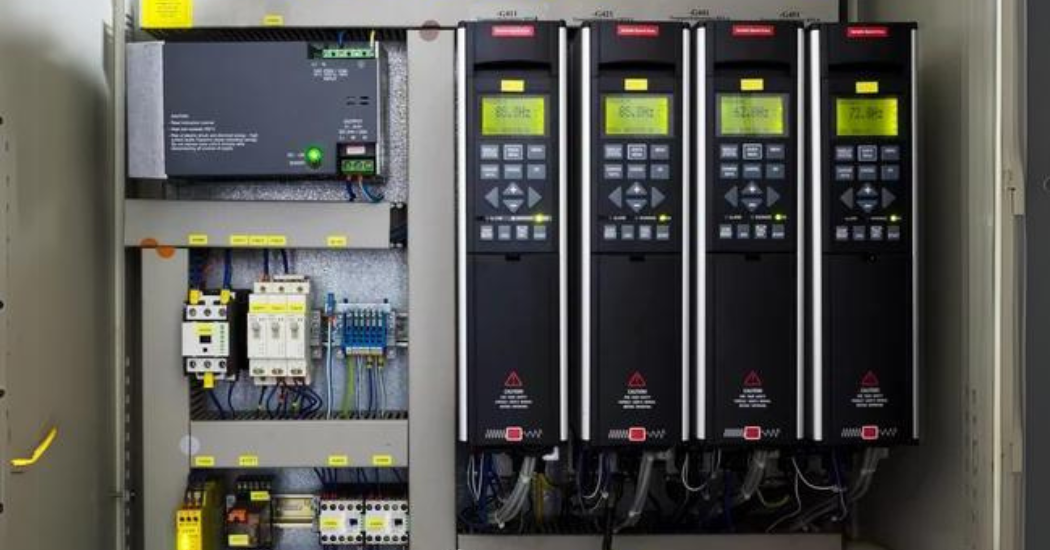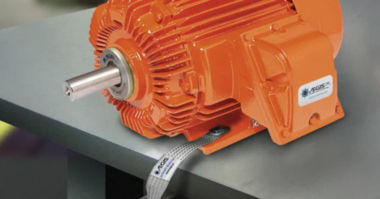In today’s rapidly advancing technological landscape, the efficiency and control of industrial equipment are paramount. One technology at the forefront of enhancing motor performance and energy conservation is the variable frequency drive (VFD). In this post, EST-AEGIS will look more at these common motor controllers.
A variable frequency drive is an electronic system that controls the speed of an AC motor by varying the frequency of electricity supplied to it. VFDs allow for precise control over motor speed and torque, which has two big advantages. For one, precise speed or torque control is needed for many industrial processes. And running motors at reduced speed saves large amounts of energy.
How Does a VFD Work?
VFDs have three core components:
- Rectifier: The first stage involves converting AC power into DC power using diodes.
- DC Bus: The DC power is then smoothed out to create a stable voltage using capacitors.
- Inverter: Finally, this DC is converted back into variable frequency AC power using switches such as IGBTs (Insulated Gate Bipolar Transistors).
Most modern VFDs use pulse width modulation to control their output frequency. Their output is a series of pulses in each phase. VFDs can efficiently manage motor speed and torque by varying the pulse width (duration) and timing.
Advantages of Using VFDs
The use of VFDs offers several technical advantages that improve overall system performance and cost-efficiency:
- Energy Savings: Significant energy savings are achieved by operating motors at needed speeds rather than constant full speed.
- Longer Motor Life: In applications with many start/stop cycles, gradually ramping the speed up and down reduces mechanical stress on motor components.
- Improved Process Control: With precise speed control, processes can be optimized for better quality and throughput.
- Reduced Maintenance Costs: Lower and smoothly varying speeds mean less wear and tear on gears, belts, and bearings.
These benefits underscore why VFDs are a common component of modern industrial electric motor systems.
The Impact of VFDs on Motor Bearings
While VFDs offer numerous benefits, they do come with their own challenges. One such problem is electrical bearing damage. The pulsed nature of drives’ output induces unwanted voltage on the shafts of motors on VFDs. If not adequately managed, this voltage will discharge through the bearings, causing electrical damage. Some of the problems caused by shaft voltage are:
- Bearing Pitting: When shaft voltage discharges by arcing through the bearing, it forms microscopic pits and fusion craters on the bearing surfaces.
- Grease Degradation: This arcing chemically degrades grease, reducing its lubricating properties. It also leads to contamination with metal particles “blasted out” of the pits described above.
- Cumulative Damage: Over time, continued electrical erosion can lead to bearing fluting, resulting in increasing noise and premature bearing failure.
To combat these problems, the AEGIS® Shaft Grounding Ring provides a safe discharge path for shaft voltage, through the ring instead of the bearings. Our rings employ proprietary conductive microfibers that channel discharge current away from the bearings.
 AEGIS® Shaft Grounding Rings and Your Bottom Line
AEGIS® Shaft Grounding Rings and Your Bottom Line
With AEGIS® Shaft Grounding Rings integrated into your systems, you can reduce motor repair/replacement costs and, more importantly, protect your operations from the huge costs of unplanned downtime.
Explore EST-AEGIS Bearing Protection Handbook for more information, or contact them today to find out how to integrate AEGIS® technology into your operations for lasting benefits.




